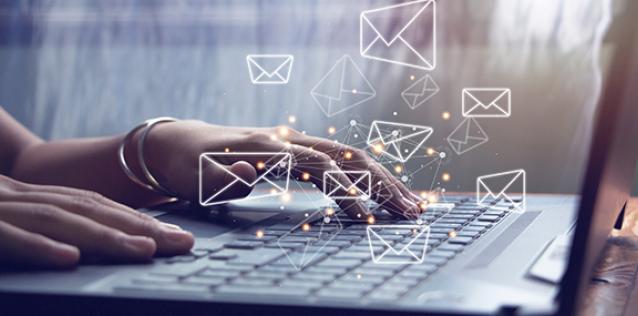Q - What if I don’t know the HS number for my product?
A - If you don’t know your HS number and you are already exporting, the best place to start is with your export paperwork. When you export a shipment valued over $2,500 or the item requires a license, you are required to report the Schedule B number of your product as part of the Electronic Export Information in the Automated Export System (AES). The U.S. Census Bureau uses this data to track U.S. exports. The number you need for the tool is the first six digits of the Schedule B number. If you’re already exporting your product, you can find your Schedule B number in your AES submission or get it from your freight forwarder.
If you can’t find the number there, or if you are a new exporter, you can search for the applicable HS number using the Census Bureau’s Schedule B Search Engine. This tool allows you to search for your product using plain language, and then the tool will ask you additional questions about your product to help classify it. If you are already exporting, you can use the first six digits of the foreign country’s tariff code.
Read about background information on Schedule B and HS Numbers.
Q - Can I use the tool if I am not an exporter?
A - Yes! There are separate settings within the tool for current exporters and new exporters.
The biggest difference is that the default weights for new exporters have additional emphasis on a country’s logistics performance, regulatory quality, and language match—traits that make a country easier to export to for a new exporter. Another difference is that, for new exporters, the tool compares the average tariff in selected markets to 0%, instead of the highest tariffs faced by a current exporter. Lastly, only countries with English as an official language will show a language match for new exporters.
Q - Can I use the tool if I export services instead of goods?
A - Unfortunately, the tool only contains data on goods. Trade data for services is maintained separately from the trade data systems for goods, and, while it is improving, it is not yet as robust and detailed as the trade data for goods.
However, if there is a good where trade is closely associated with demand for the service you export, you may be able to use that product as a proxy to glean some information on potential demand for services. Our team is working on a series of similar tools for various service sectors. The first one, for the International Education sector, has been released.
Q - What if I am facing retaliatory tariffs in certain markets?
A - A number of countries and U.S. trading partners have imposed or announced their intent to impose retaliatory tariffs on specific exports from the United States in response to U.S. trade actions.
This tool only includes most-favored nation tariffs (if the country is not an FTA partner) or preferential tariffs (if the country is an FTA partner). The tool does not consider tariffs under quotas, anti-dumping or countervailing duties, or retaliatory tariffs. Therefore, if your product is facing a particularly trade-distorting tariff, such as a retaliatory tariff, the results in the tool may not accurately reflect the effect these tariffs would realistically have on potential exports to that market.
If you are unsure whether your product faces retaliatory tariffs in foreign markets, the Department of Commerce’s Industry & Analysis unit has compiled information on current foreign retaliation against the United States, which includes a list of products subject to retaliatory tariffs.
Q - Why can’t I see my HS number?
A - Sometimes HS numbers are written with periods. Make sure you are entering your HS number without periods. For example, enter 841191, not 8411.91.
Also, make sure the number you’re entering is six digits long. You can’t select the HS number 8411 or the more detailed 84119110.
If that doesn’t work, make sure your number is in the correct nomenclature. The international Harmonized System is administered by the World Customs Organization. The World Customs Organization updates the HS System with a new nomenclature approximately every five years as trade patterns shift and new products are introduced. The last time this was done was in 2022. Check the U.S. tariff schedule at the U.S. International Trade Commission to make sure that the HS number you’re using is current.
Q - Why is the country I’m looking for not in the list of choices?
A - First, make sure there isn’t an alternate name or spelling for the country you are looking for. For example, the tool uses Côte d’Ivoire instead of the alternate Ivory Coast.
If you still can’t find the country you are looking for, this is likely due to data availability issues. For a country to be included in the menu, we need to have enough data for that country to be included in the calculations.
Sufficient data means that:
- We have a tariff schedule for the country—a list of the country’s tariffs for each product.
- The country has published trade data for at least three of the five years of data included in the tool.
- We have data for the country in the other country-level datasets included in the calculations, such as logistics performance.
You can check whether a market has sufficient data to be included in the calculations in the “Data Availability Table” in the results section of the tool.
Q - Why aren’t all countries listed in the results?
A - There are several reasons why a country you’re looking for might not appear in the results.
The tool relies on international trade data (data reported by the countries in the tool), rather than U.S.-reported trade data. Not all countries regularly report their trade data to the United Nations. If a country doesn’t have at least 3 years of trade data in the tool’s five-year period, then it won’t appear in the results. If a country is missing any of the other data needed for the calculations, such as tariff data, it also won’t appear in the results. You can check whether a market has sufficient data to be included in the calculations in the “Data Availability Table” in the results section of the tool.
Additionally, the tool excludes current markets from the list of potential new markets. If you have selected “France” as a current market, France will not appear in the results even if you pick “Europe” as a region.
Another reason a country might not appear in the results is if it does not import the product in question at all. If the country has zero imports from the world of the product, it is not included in the calculations.
Finally, make sure the country is selected on the “New Markets” page in the menu. You may have selected a region that does not include the country you are looking for. Clicking the “Countries in the Region” button will open a pop-up window where you can explore which countries are in a region and whether each has sufficient data to be included in the results.
Q - Why do I get different results when I search for the same product multiple times?
A - The tool compares only the countries you want to see in the results. The score it assigns to a country is dependent on that country’s standing relative to only the other countries in the search results. If you change the countries, the scores and even the relative ranking will likely change.
Let’s say you run a search only looking at South America. In this search, Brazil gets a score of 75.2. But then you broaden your geographic search to include all of Latin America. Now Brazil has a score of 71. This is because other countries were added to the calculations. Since the countries are measured relative to each other, adding countries that score better or worse than Brazil on certain indicators may push Brazil’s overall score up or down and may change where Brazil ranks.







